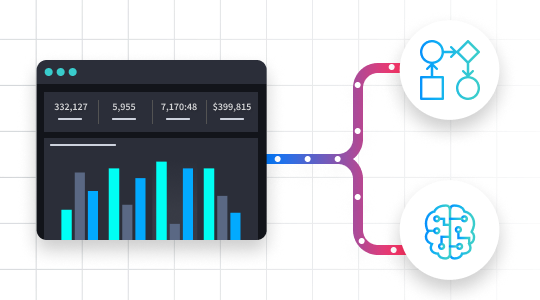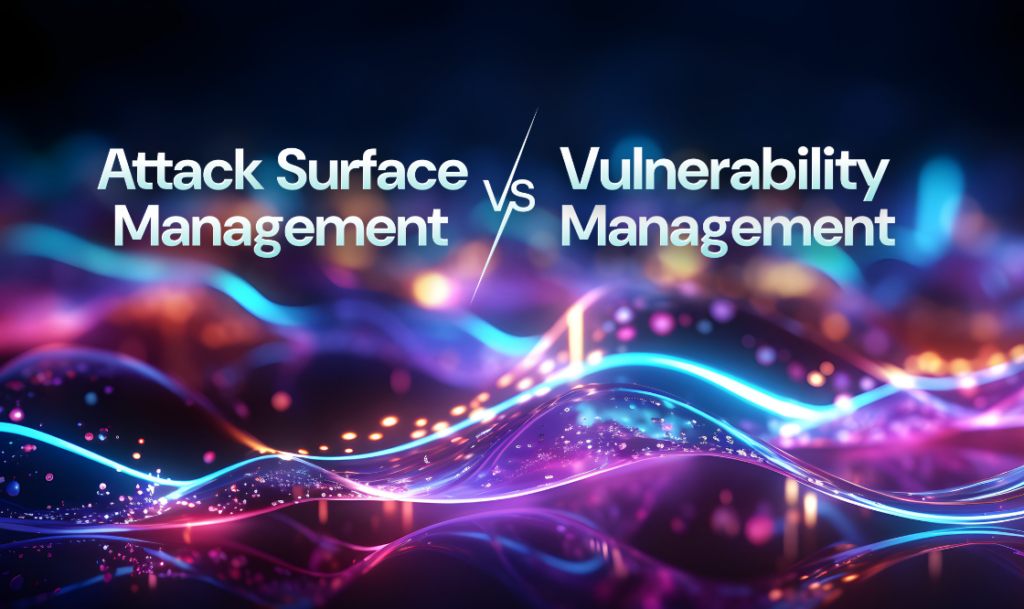Attack Surface Management vs. Vulnerability Management: Differences, Similarities & Why Both Matter
Two critical strategies for reducing security risks are Attack Surface Management (ASM) and Vulnerability Management (VM). While both aim to identify and mitigate threats, they focus on different aspects of security risk.
In this article, we’ll break down the key differences between ASM and VM, explain how they complement each other, and explore how AI automation platforms like Swimlane Turbine can streamline both processes to improve cyber risk management.
What is Vulnerability Management?
Vulnerability Management (VM) is the process of identifying, assessing, prioritizing, and remediating security vulnerabilities in an organization’s IT environment. It focuses on known weaknesses within systems, applications, and networks that attackers could exploit.
VM is essential for reducing risk, but it primarily addresses known threats rather than identifying unknown or external attack surfaces.
Vulnerability Management Process
A mature process follows a continuous, Vulnerability Management Lifecycle designed to reduce risk and strengthen overall security posture:
- Asset Inventory – Establish a complete, up-to-date inventory of all assets across on-premises, cloud, and hybrid environments.
- Vulnerability Discovery – Identify vulnerabilities across known assets using scanning tools and threat intelligence feeds.
- Vulnerability Prioritization – Contextualize risk by correlating CVSS scores with asset criticality, business impact, and exploitability.
- Remediation – Apply patches, configuration changes, or compensating controls based on prioritization outcomes.
- Verification – Confirm that remediation efforts have been successful and that vulnerabilities have been resolved.
- Reporting & Metrics – Track vulnerability trends, remediation SLAs, and risk reduction over time to inform leadership and drive accountability.
While vulnerability management helps secure known assets, it often lacks visibility into unknown, unmanaged, or third-party systems—gaps that Attack Surface Management (ASM) is designed to uncover and address.
What is Attack Surface Management (ASM) in Cybersecurity?
Attack Surface Management (ASM) is a cybersecurity strategy that continuously identifies, monitors, and reduces an organization’s external attack surface. This includes all digital assets exposed to the internet, such as cloud resources, third-party integrations, APIs, and shadow IT.
Unlike VM, which scans internal systems for known vulnerabilities, ASM helps security teams discover and secure unknown or unmanaged assets before attackers can exploit them.
ASM typically involves:
- Continuous Discovery – Identifying publicly exposed assets, including shadow IT.
- Risk Monitoring – Assessing external attack vectors and detecting misconfigurations.
- Threat Intelligence Correlation – Linking external exposures with real-world attack patterns.
- Attack Surface Reduction – Implementing security controls to minimize the exposure of high-risk assets.
ASM is particularly valuable for organizations with large, complex, or cloud-based environments, where assets frequently change.
Attack Surface Management Process
The ASM process generally follows these steps:
- Asset Discovery – Continuously scanning for externally exposed digital assets, including IPs, domains, cloud services, and third-party integrations.
- Risk Classification – Identifying and categorizing potential attack vectors, such as open ports, misconfigured cloud resources, or outdated software.
- Threat Monitoring – Tracking real-time threats and correlating data with threat intelligence sources.
- Remediation & Risk Reduction – Automating security controls, blocking unnecessary exposure, or enforcing stricter access policies.
- Ongoing Continuous Assessment – Re-evaluating attack surfaces as new digital assets are deployed or modified.
Attack Surface Management vs. Vulnerability Management: Key Differences
| Feature | Vulnerability Management (VM) | Attack Surface Management (ASM) |
| Focus | Identifying and fixing known vulnerabilities | Discovering and managing external attack surfaces |
| Scope | Internal IT assets (servers, endpoints, applications) | Internet-facing assets (cloud, APIs, third-party systems) |
| Detection | Uses vulnerability scanning tools | Uses continuous discovery and threat intelligence |
| Goal | Patch and remediate security flaws | Reduce the attack surface and prevent exposure |
| Automation Role | Helps prioritize and streamline remediation | Helps continuously monitor and reduce risk |
While different in approach, ASM and VM are most effective when used together to create a comprehensive cyber risk management strategy.
How Vulnerability Management and Attack Surface Management Work Together
Organizations that integrate ASM and VM gain better security visibility and faster risk reduction. Here’s how they complement each other:
- ASM discovers unknown assets, ensuring VM scans are more comprehensive.
- VM assesses risks on known assets, while ASM monitors external threats.
- ASM helps prioritize remediation by highlighting high-risk external exposures.
- Both can be automated to streamline security operations and response.
Security teams using both ASM and VM can reduce blind spots, minimize risk exposure, and respond to threats faster.
How Swimlane Automates ASM & VM for Faster Risk Reduction
Swimlane Turbine strengthens both ASM and VM by automating and orchestrating the end-to-end vulnerability response lifecycle.
Swimlane recently introduced the Swimlane Vulnerability Response Management (VRM) solution. The Swimlane VRM solution goes beyond traditional vulnerability tools by prioritizing risks based on real business context—not just lists. Once scored, findings are routed for action through automated workflows and cross-team collaboration. The result? Faster remediation, reduced risk, and better efficiency. Here’s how it accelerates cyber risk reduction:
- Ingests and normalizes data from ASM and VM tools to create a unified view of exposures across internal and external assets
- Correlates ASM findings with vulnerability data to prioritize the most critical risks based on business impact and threat intelligence
- Automates response workflows, including ticket creation, patch scheduling, threat containment, and stakeholder notifications
- Delivers real-time dashboards and metrics to track attack surface changes, remediation progress, and SLA compliance
By automating these complex processes with AI-driven playbooks, Swimlane empowers security teams to eliminate manual bottlenecks, reduce threat exposure, and respond to threats faster.
FAQs: Attack Surface Management vs. Vulnerability Management
How does Attack Surface Management help with Vulnerability Management?
ASM enhances VM by continuously discovering external-facing assets that may not be included in traditional vulnerability scans. By integrating ASM findings with VM tools, security teams can ensure that previously unknown or unmonitored assets are assessed for vulnerabilities.
How does Threat Exposure differ from a Vulnerability?
Threat exposure refers to the overall likelihood that an organization’s assets could be targeted or exploited. Vulnerabilities are specific security flaws in software, hardware, or configurations. ASM helps reduce threat exposure by minimizing publicly accessible attack vectors, while VM helps remediate known vulnerabilities.
How can Security Automation Reduce Cyber Risk and Improve Threat Exposure Management?
Security automation platforms like Swimlane streamline cyber risk management by:
- Automating attack surface discovery and vulnerability detection
- Prioritizing high-risk exposures based on real-time intelligence
- Triggering automated remediation workflows to patch vulnerabilities or restrict access
- Providing continuous monitoring to detect new risks in real time
By integrating ASM, VM, and automation, organizations gain faster response times, fewer manual processes, and stronger security postures.
Request a demo today!

Swimlane Vulnerability Response Management Solution
The Swimlane Vulnerability Response Management (VRM) Solution closes the loop on Vulnerability Management. It is the industry’s most intelligent solution for smarter risk prioritization and management.
Check out this datasheet to learn how it can help you avoid breaches, compliance failures and costly penalties.


